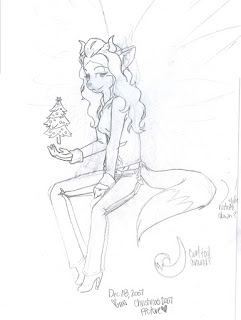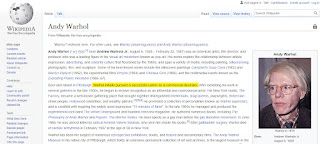When I was in art school I took a variety of art classes. I
ended up getting my Bachelor’s Degree in Fine Art Photography as at the time I
wanted to make a career out of digitally editing and restoring photographs. Now
I think I would’ve been more suited (despite a great love for photography) to
majoring in drawing. As they say, hindsight is 20/20.
In one class in particular, the professor (who shall remain
nameless) assigned us a handful of written essays in addition to our art projects
throughout the semester. The first essay is one I will remember until the day I
die: she assigned us to write an essay about how illustration isn’t real art.
I was completely floored, and spoke to the Dean of the Art Department. “Illustration is what I do!” I exclaimed, frustrated beyond belief. Looking back, I’m not sure what I was hoping to accomplish with the meeting. I wasn’t looking for her to be reprimanded or anything, but couldn’t I at least write about something else? His response was to say “I don’t want you to feel like I’m just siding with my professors, but…” He sided with his professor. He theorized that she was trying to get me to “expand my horizons.” By stifling an entire genre of art? That doesn’t seem right.
But I have always been a good student, and not a fan of
confrontation, so I wrote an essay defending illustration. The original
essay has been lost for many years, but it went a little something like this:
Merriam-Webster
defines the word illustration as “something that serves to illustrate, such as:
1. A picture or diagram that helps make something clear or attractive. B. An
example or instance that helps make something clear.” I believe we can all
agree that for many years (since 1828, according to their website)
Merriam-Webster has been a trusted dictionary for accurate definitions of words
in the English language.
(When I got my graded paper back, the professor had written some
comments in the margin – the one for this paragraph just said “No.”)
Andy Warhol, prior to his widespread fame and success, worked as an illustrator for Sears catalogue. I don’t think anyone would dare argue that Andy Warhol’s drawings and paintings aren’t art, or that he isn’t considered a “real” artist.
(The professor made a note here that said “always an artist,
not always making art.”)
And finally, according to the definition given above, the majority
of art history can be labeled as “illustrations.” Ancient cave paintings were
created to help tell and record stories. Before photography, portraits were
painted to make it clear who the important people were in society. Even stained
glass windows, sculptures, and paintings in churches were created solely to
illustrate stories from the Bible, so the masses could understand without reading
the book themselves. A perfect example is the Sistine Chapel. Nobody in their
right mind would claim that the Sistine Chapel
ceiling isn’t art, but it sure falls under the definition of “illustration.”
(She didn’t have a comment for this one.)
In the end, I got the lowest grade possible on my paper: a check
minus. Her grading scale apparently has three checkmark levels; a check, which
I guess was like a C; a check plus, which was an excellent grade; and a check
minus, which was on par with an F. She asked me if I wanted to talk about my
paper face-to-face after she graded it, and I said no (again, fear of
confrontation.)
Although thinking back, this wasn’t the first time I wrote a paper like this. Back in high school, we had to write a paper about Beowulf, and mine was a persuasive essay on how Grendel’s mother was just a mom grieving the murder of her son, and Beowulf was actually the villain in the story. My English teacher gave me an A on that one. 😉


No comments:
Post a Comment